-
 Bitcoin
Bitcoin $117600
0.81% -
 Ethereum
Ethereum $3740
2.85% -
 XRP
XRP $3.144
1.82% -
 Tether USDt
Tether USDt $1.000
-0.02% -
 BNB
BNB $783.9
2.87% -
 Solana
Solana $186.4
3.29% -
 USDC
USDC $0.0000
0.01% -
 Dogecoin
Dogecoin $0.2366
4.34% -
 TRON
TRON $0.3171
1.43% -
 Cardano
Cardano $0.8233
3.00% -
 Hyperliquid
Hyperliquid $44.24
6.38% -
 Sui
Sui $3.973
9.32% -
 Stellar
Stellar $0.4373
4.45% -
 Chainlink
Chainlink $18.36
4.93% -
 Hedera
Hedera $0.2662
12.25% -
 Bitcoin Cash
Bitcoin Cash $557.3
6.22% -
 Avalanche
Avalanche $24.05
3.14% -
 Litecoin
Litecoin $112.8
2.67% -
 UNUS SED LEO
UNUS SED LEO $8.994
0.20% -
 Shiba Inu
Shiba Inu $0.00001403
5.07% -
 Toncoin
Toncoin $3.211
4.17% -
 Ethena USDe
Ethena USDe $1.001
-0.02% -
 Uniswap
Uniswap $10.48
6.16% -
 Polkadot
Polkadot $4.110
4.03% -
 Monero
Monero $324.8
-1.64% -
 Dai
Dai $1.000
0.00% -
 Bitget Token
Bitget Token $4.571
0.92% -
 Pepe
Pepe $0.00001260
5.52% -
 Aave
Aave $297.3
4.47% -
 Cronos
Cronos $0.1321
4.62%
How to adjust the difficulty of graphics card mining?
To optimize GPU mining, carefully overclock, ensure effective cooling, choose compatible algorithms, and monitor performance to maximize efficiency and profitability.
Mar 27, 2025 at 06:14 am
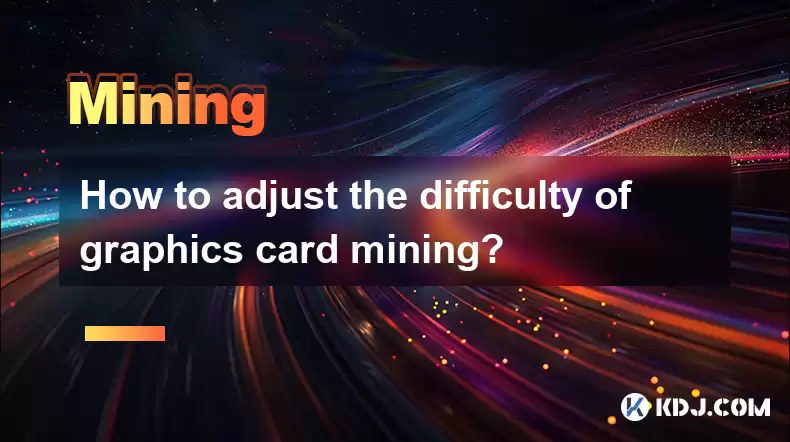
How to Adjust the Graphics Card Mining Difficulty?
Understanding Mining Difficulty and its Relation to Graphics Cards
Mining difficulty in cryptocurrencies like Bitcoin or Ethereum refers to how computationally hard it is to solve the cryptographic puzzle required to add a new block to the blockchain. This difficulty adjusts automatically to maintain a consistent block generation time, typically around 10 minutes for Bitcoin. Higher difficulty means more computational power is needed, leading to increased electricity consumption and potentially lower profitability. Your graphics card's performance directly impacts your ability to contribute to the mining process and thus, indirectly influences your perceived "difficulty." You don't directly adjust the network's difficulty, but you can adjust your mining setup to optimize your chances of finding blocks.
Factors Affecting Perceived Mining Difficulty for Your GPU
Several factors influence how challenging it seems to mine cryptocurrencies using your graphics card. These aren't adjustments to the network difficulty itself, but they impact your success rate:
Hashrate: This is the measure of your GPU's computational power. A higher hashrate means you solve more cryptographic puzzles per second, increasing your chances of mining a block. You can improve your hashrate by overclocking (carefully!), using better cooling, and selecting efficient mining algorithms.
Mining Pool: Joining a mining pool combines your hashrate with others, increasing your chances of finding a block and earning rewards more frequently. The pool's size and efficiency affect your perceived difficulty – a larger pool distributes rewards among more miners.
Algorithm Selection: Different cryptocurrencies use different mining algorithms. Some algorithms are better suited for certain GPU architectures than others. Choosing an algorithm optimized for your graphics card maximizes your efficiency. Experimentation is key.
Software and Drivers: Using optimized mining software and up-to-date drivers ensures your GPU operates at peak performance. Outdated software or drivers can significantly reduce your hashrate.
Hardware Limitations: The age, model, and cooling capabilities of your GPU directly impact its performance. An older or less powerful GPU will naturally find mining more difficult.
Optimizing Your Graphics Card for Cryptocurrency Mining
You can't directly change the network's mining difficulty, but you can optimize your GPU setup to maximize your mining efficiency. This involves several steps:
Overclocking (Proceed with Caution): Carefully overclocking your GPU can increase its hashrate. However, this increases heat generation and risks damaging your hardware if not done correctly. Start with small increments and monitor temperatures closely.
Effective Cooling: Adequate cooling is crucial, especially when overclocking. Invest in high-quality cooling solutions like improved fans, heatsinks, or liquid cooling systems. High temperatures throttle performance, reducing your hashrate.
Choosing the Right Mining Software: Select mining software compatible with your GPU and the chosen algorithm. Research and compare different options to find the most efficient software for your setup. Popular options include NiceHash, TeamRedMiner, and others.
Power Supply Considerations: Mining is power-intensive. Ensure your power supply can handle the increased demand from your overclocked GPU. Underpowering can lead to instability and hardware damage.
Monitoring Your GPU: Regularly monitor your GPU's temperature, voltage, and fan speeds using monitoring software. This helps identify potential problems and prevent damage.
Selecting the Right Cryptocurrency and Algorithm
The choice of cryptocurrency significantly impacts mining difficulty. Some coins have lower network difficulty, making them easier to mine with less powerful hardware. However, their profitability might be lower.
Research Network Difficulty: Before mining a specific cryptocurrency, research its current network difficulty. Websites and mining calculators provide this information.
Algorithm Compatibility: Ensure the chosen cryptocurrency's algorithm is compatible with your GPU's architecture. Some algorithms are more efficient on certain GPU types than others.
Profitability Calculations: Use online calculators to estimate the profitability of mining different cryptocurrencies with your hardware. Consider electricity costs when assessing profitability.
Troubleshooting Common Mining Issues
Low Hashrate: Check your overclocking settings, cooling, drivers, and mining software for potential issues.
High Temperatures: Improve cooling, reduce overclocking, or consider a different mining algorithm that is less demanding.
Software Errors: Ensure you have the latest drivers and mining software. Consult the software's documentation for troubleshooting tips.
Hardware Failures: If problems persist, consider hardware faults. Check for damaged components or failing parts.
Frequently Asked Questions
Q: Can I directly adjust the mining difficulty of a cryptocurrency?
A: No, the mining difficulty is automatically adjusted by the cryptocurrency network itself, not by individual miners. You can only optimize your hardware and software to improve your chances of successfully mining.
Q: How does overclocking affect mining difficulty?
A: Overclocking doesn't change the network's difficulty. It increases your GPU's hashrate, making it seem easier to mine because you solve more hashes per second. However, it comes with risks.
Q: What is the impact of mining pools on perceived difficulty?
A: Mining pools don't change the network difficulty. They combine the hashrate of multiple miners, increasing the chance of finding a block and earning rewards more frequently. This makes the mining process feel less difficult.
Q: My hashrate is low. What should I do?
A: Check your overclocking settings, cooling, drivers, and mining software. Ensure your power supply is adequate. Consider reinstalling drivers or mining software.
Q: How do I choose the right cryptocurrency to mine?
A: Consider the network difficulty, algorithm compatibility with your GPU, and the profitability of mining that cryptocurrency, taking into account electricity costs. Use online calculators to help you make an informed decision.
Disclaimer:info@kdj.com
The information provided is not trading advice. kdj.com does not assume any responsibility for any investments made based on the information provided in this article. Cryptocurrencies are highly volatile and it is highly recommended that you invest with caution after thorough research!
If you believe that the content used on this website infringes your copyright, please contact us immediately (info@kdj.com) and we will delete it promptly.
- VIRTUAL Weekly Drop: Recovery Analysis and Privacy Push
- 2025-07-26 08:50:11
- Bitcoin, Cynthia Lummis, and Freedom Money: A New Yorker's Take
- 2025-07-26 08:30:11
- Crypto Gainers, Top 10, Week 30: Altcoins Buck the Trend
- 2025-07-26 08:55:12
- Solana, Altcoins, and Coinbase: What's the Buzz?
- 2025-07-26 06:30:12
- XRP in 2025: Bull Run or Bust?
- 2025-07-26 07:30:12
- Ruvi AI Presale Heats Up: Early Investors Eyeing Big Gains
- 2025-07-26 09:10:13
Related knowledge
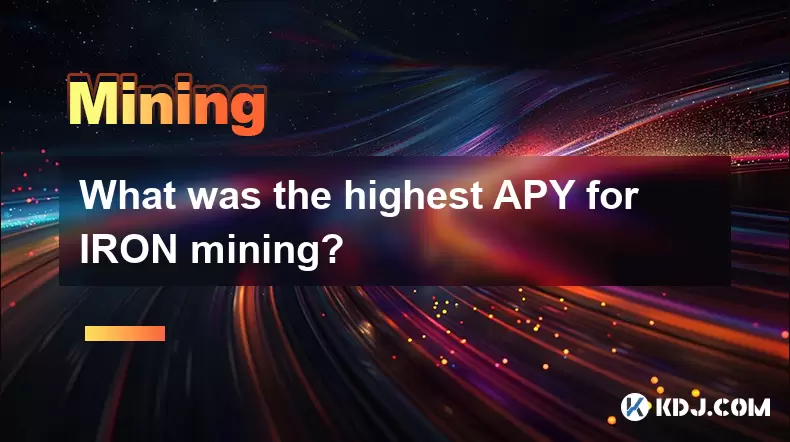
What was the highest APY for IRON mining?
Jul 23,2025 at 05:14am
Understanding IRON Token and Its Mining MechanismThe IRON token is a stablecoin that operates within the Iron Finance ecosystem, primarily on blockcha...

What is impermanent loss in IRON pools?
Jul 23,2025 at 09:00am
Understanding Impermanent Loss in the Context of IRON PoolsImpermanent loss is a phenomenon that affects liquidity providers in decentralized finance ...
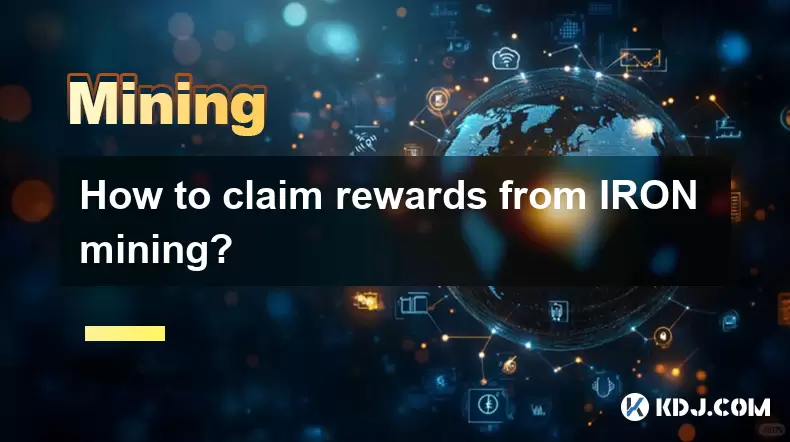
How to claim rewards from IRON mining?
Jul 23,2025 at 02:21pm
Understanding IRON Mining and Reward MechanismsIRON Finance operated as a decentralized finance (DeFi) protocol on the Polygon and Binance Smart Chain...
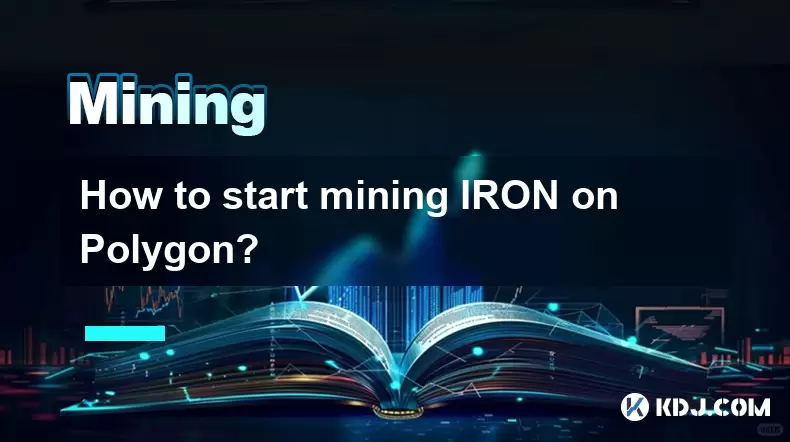
How to start mining IRON on Polygon?
Jul 23,2025 at 08:00pm
Understanding IRON and Its Role on PolygonIRON is a decentralized, algorithmic stablecoin designed to maintain a 1:1 peg with the US dollar. It operat...
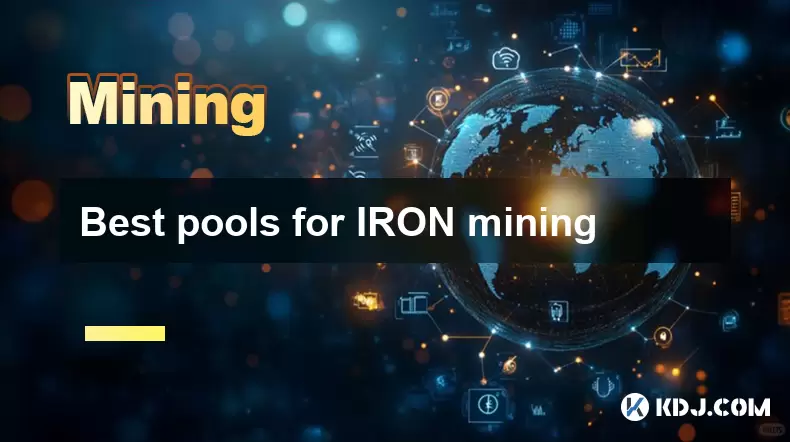
Best pools for IRON mining
Jul 26,2025 at 03:56am
Understanding IRON Mining and Its Unique MechanismIRON (Iron Finance) was a decentralized finance (DeFi) project that aimed to create a multi-chain al...
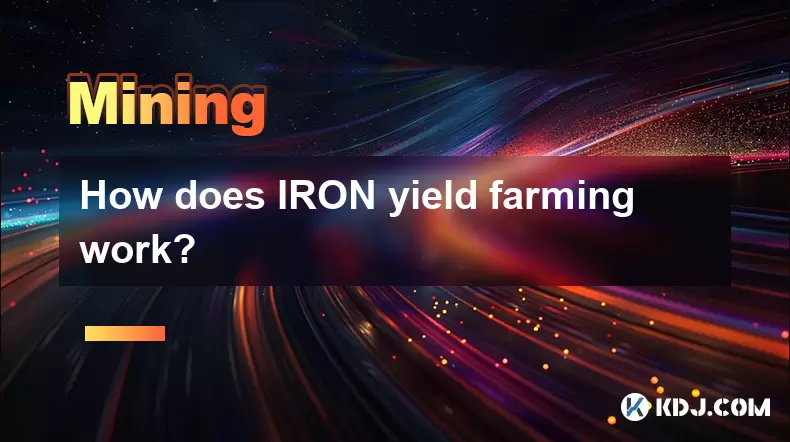
How does IRON yield farming work?
Jul 23,2025 at 10:14pm
Understanding IRON Yield Farming and Its Core MechanismIRON yield farming is a decentralized finance (DeFi) strategy that allows users to earn rewards...

What was the highest APY for IRON mining?
Jul 23,2025 at 05:14am
Understanding IRON Token and Its Mining MechanismThe IRON token is a stablecoin that operates within the Iron Finance ecosystem, primarily on blockcha...

What is impermanent loss in IRON pools?
Jul 23,2025 at 09:00am
Understanding Impermanent Loss in the Context of IRON PoolsImpermanent loss is a phenomenon that affects liquidity providers in decentralized finance ...

How to claim rewards from IRON mining?
Jul 23,2025 at 02:21pm
Understanding IRON Mining and Reward MechanismsIRON Finance operated as a decentralized finance (DeFi) protocol on the Polygon and Binance Smart Chain...

How to start mining IRON on Polygon?
Jul 23,2025 at 08:00pm
Understanding IRON and Its Role on PolygonIRON is a decentralized, algorithmic stablecoin designed to maintain a 1:1 peg with the US dollar. It operat...

Best pools for IRON mining
Jul 26,2025 at 03:56am
Understanding IRON Mining and Its Unique MechanismIRON (Iron Finance) was a decentralized finance (DeFi) project that aimed to create a multi-chain al...

How does IRON yield farming work?
Jul 23,2025 at 10:14pm
Understanding IRON Yield Farming and Its Core MechanismIRON yield farming is a decentralized finance (DeFi) strategy that allows users to earn rewards...
See all articles

























































































